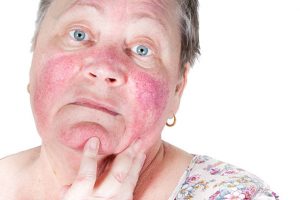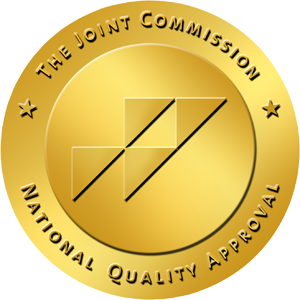Rosacea: Beyond a Rose-Colored Face
 April is designated as Rosacea Awareness Month to inform the public about rosacea, a common skin disease that is present on the face. People with this condition tend to have rose-colored faces or usually blush more easily than others.
April is designated as Rosacea Awareness Month to inform the public about rosacea, a common skin disease that is present on the face. People with this condition tend to have rose-colored faces or usually blush more easily than others.
According to the American Academy of Dermatology (AAD), anyone – including children – can get rosacea. However, women are more likely than men to get this form of skin disease, but it may be more severe on men. Although there is no sole cause of rosacea, the AAD indicates that most people who get rosacea are:
- Between 30 and 50 years old
- Fair-skinned with blonde hair and blue eyes
- From Celtic or Scandinavian ancestry
- Likely to have someone in their family tree with rosacea or severe acne
- Likely to have had a lot of acne
The Four Subtypes of Rosacea
Redness caused by rosacea usually appears on the cheeks and nose, it can spread to the chin and forehead. In some cases, the ears, chest and back also are affected. Rosacea has many signs and symptoms, and there are four subtypes of the disease:
- Facial redness, flushing, visible blood vessels
- Redness, swelling, and acne-like breakouts
- Thickening of the skin with a bumpy texture (this subtype is rare)
- Irritated and red and eyes, swollen eyelids
According to the AAD, “some people have more than one rosacea subtype at the same time. Each subtype requires different treatment.” The AAD also lists signs and symptoms for each subtype.
Subtype 1:
- Flushing and redness in the center of the face
- Visible broken blood vessels
- Sensitive and/or swollen skin
- Burning and/or stinging skin
- Dry, rough or scaling skin
Subtype 2:
- Acne-like breakouts, usually where the skin is red
- Oily, sensitive or burning and stinging skin
- Visible broken blood vessels
- Raised patches of skin
Subtype 3:
- Bumpy texture to the skin
- Thickening skin, usually on the nose but may occur on the chin, forehead, cheeks and ears
- Visible broken blood vessels
- Pores look large
- Oily skin
Subtype 4:
- Watery or bloodshot eyes
- Gritty feeling in the eyes
- Dry, itchy, burning or stinging eyes
- Light sensitivity and/or blurry vision
- Visible broken blood vessels on an eyelid
- Cyst on the eyelid
- Not able to see as well as before
Rosacea Skin Care Regimen
There is no medical test that can determine whether a person has rosacea. A dermatologist will examine the skin and eyes and rule out other medical conditions. Once rosacea is suspected, you can discuss treatment options with your dermatologist. Following these everyday habits listed also can help improve skin appearance:
- Learn what triggers your rosacea and make some changes.
- Practice rosacea friendly skin care.
- Use mild skin care products or those that your dermatologist recommends and be gentle with your skin
- Rinse your face with lukewarm or cool water
- Gently pat your skin dry with a clean, soft towel
- Do not use washcloths, astringents, toners and deodorant soaps on skin with rosacea
- Green-tinted makeup made specifically for people with rosacea can hide redness too
- Protect your skin from sunlight, the leading cause of rosacea flare-ups.
- Apply a broad-spectrum sunscreen with SPF 30 or higher every day before you head outdoors. If the sunscreen irritates your skin, try one that contains only titanium dioxide, zinc oxide or both
- Avoid the midday sun and seek shade when outdoors
- Wear sun-protective clothing, sunglasses or a wide-brimmed hat when outdoors to protect your face and neck from the sun
Rosacea Treatment
The effects of rosacea can have a negative impact on how a person feels about himself or herself. He or she may become frustrated, embarrassed, worried, depressed and have low self-esteem. A dermatologist can create a treatment plan to help improve a person’s quality of life.
Lasers or other light-based treatment may be an option for patients who constantly have a red face or visible blood vessels. This type of treatment can be costly since insurance rarely covers it, and most people need several treatments to see results.
Prescription medications such as gels and creams can effectively reduce the redness on your face caused by rosacea. With daily use, you can have reduced facial redness for up to 12 hours a day. Carmichael’s Compounding Pharmacy in Crowley can compound creams and dermatological treatments prescribed by a dermatologist. Although there is no cure for rosacea, it responds well to topical treatments, which are rubbed directly into the affected skin for relief.




 Accredited/Certified by The Joint Commission
Accredited/Certified by The Joint Commission